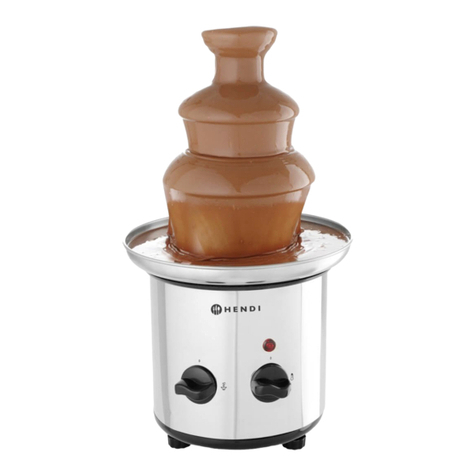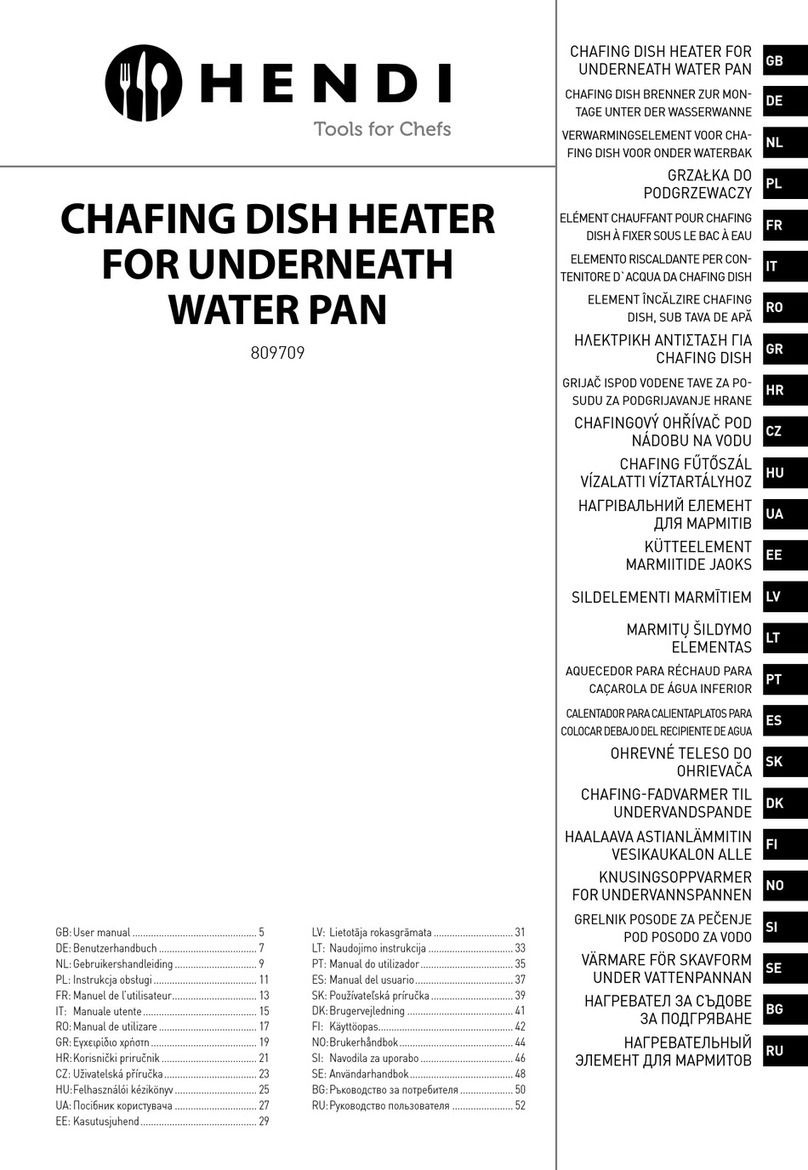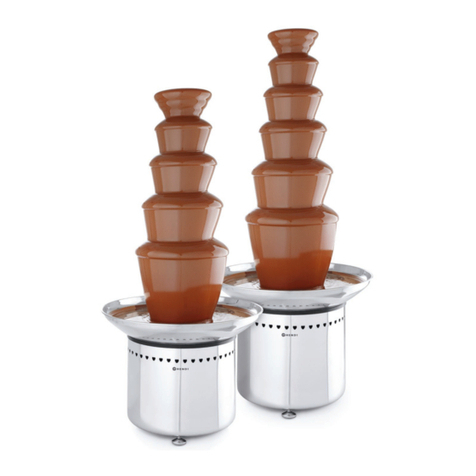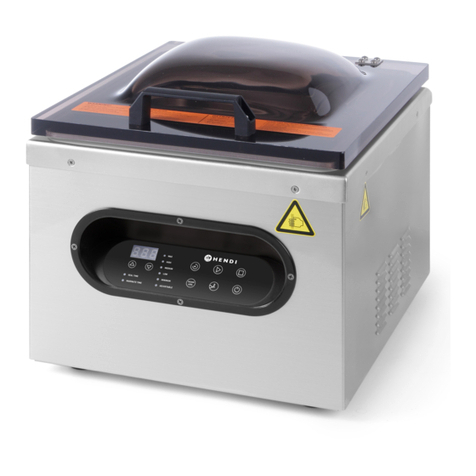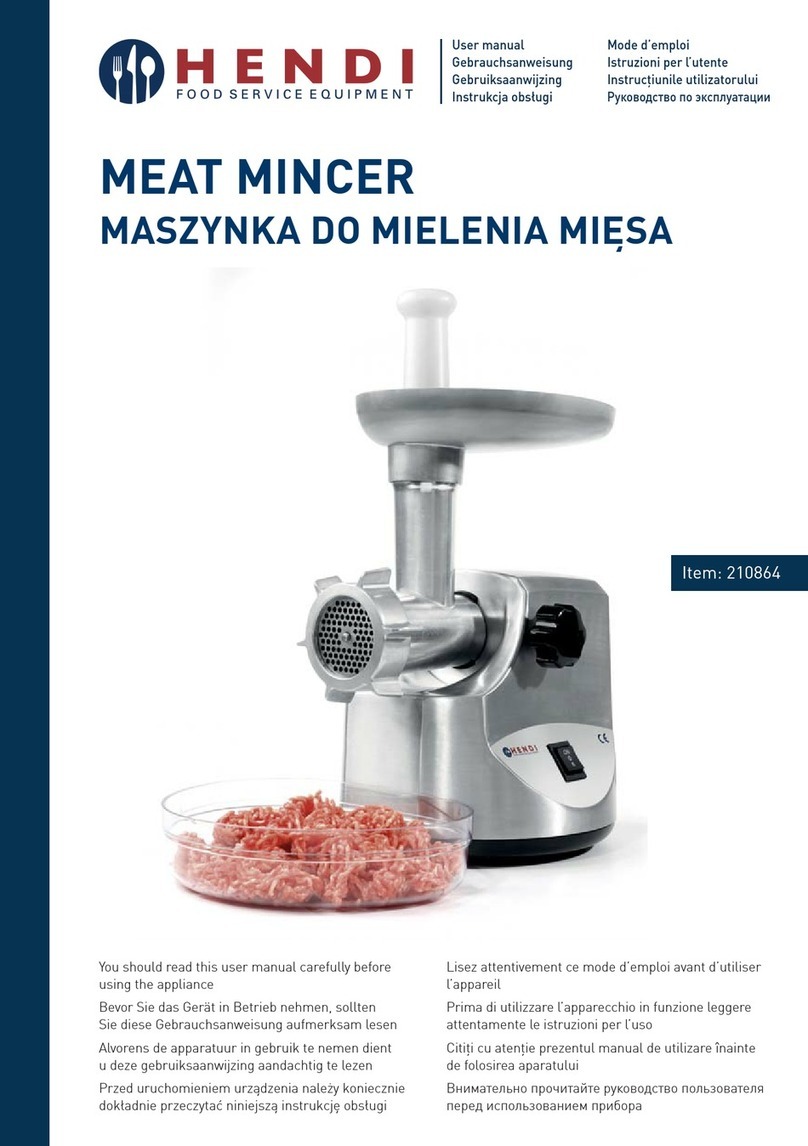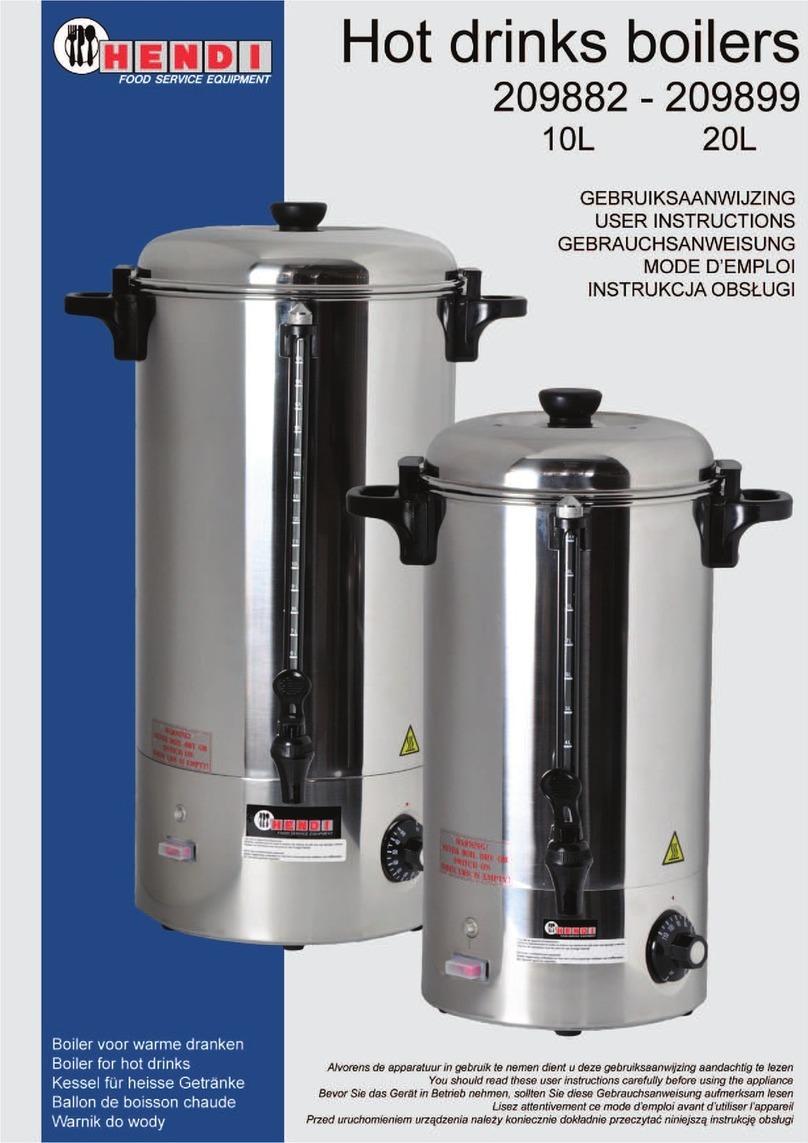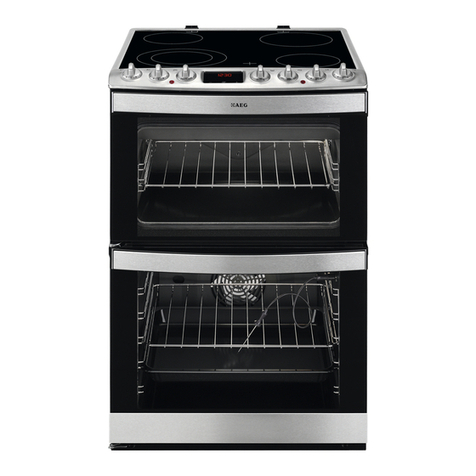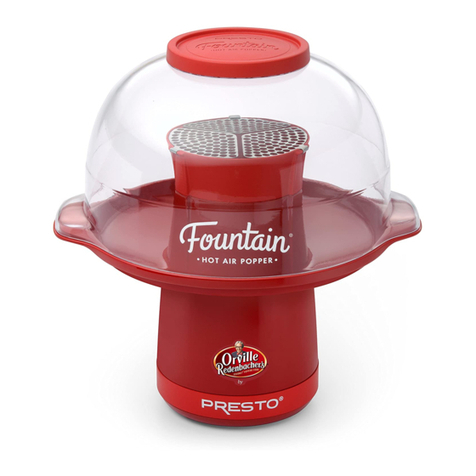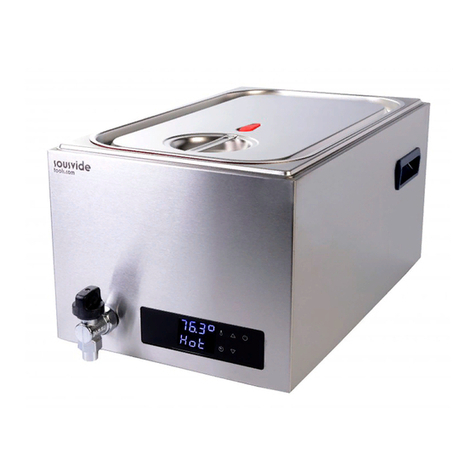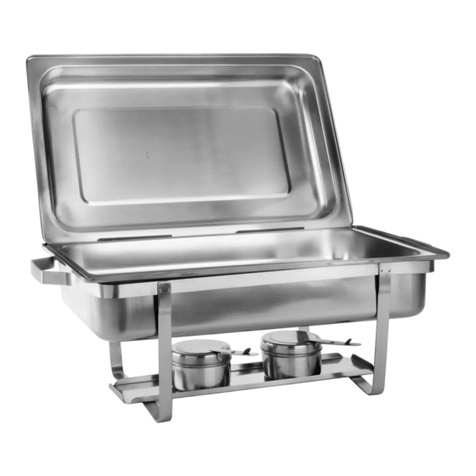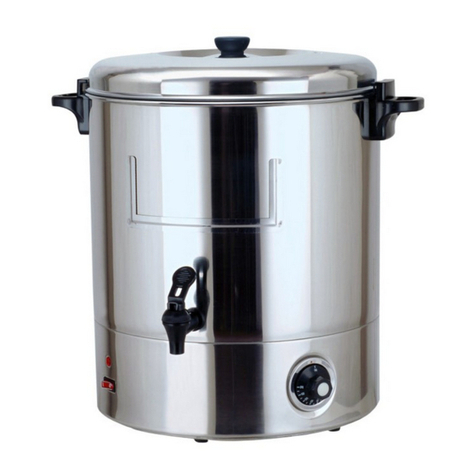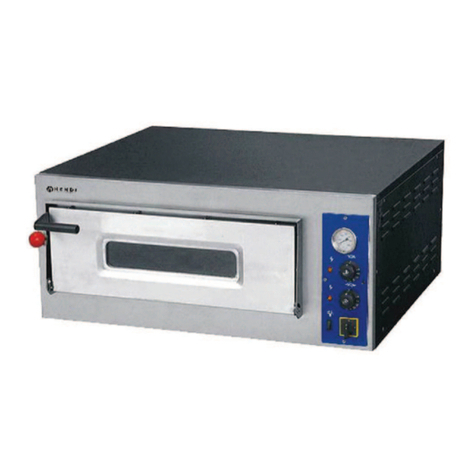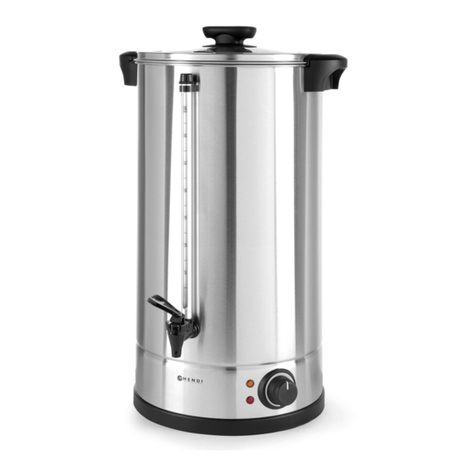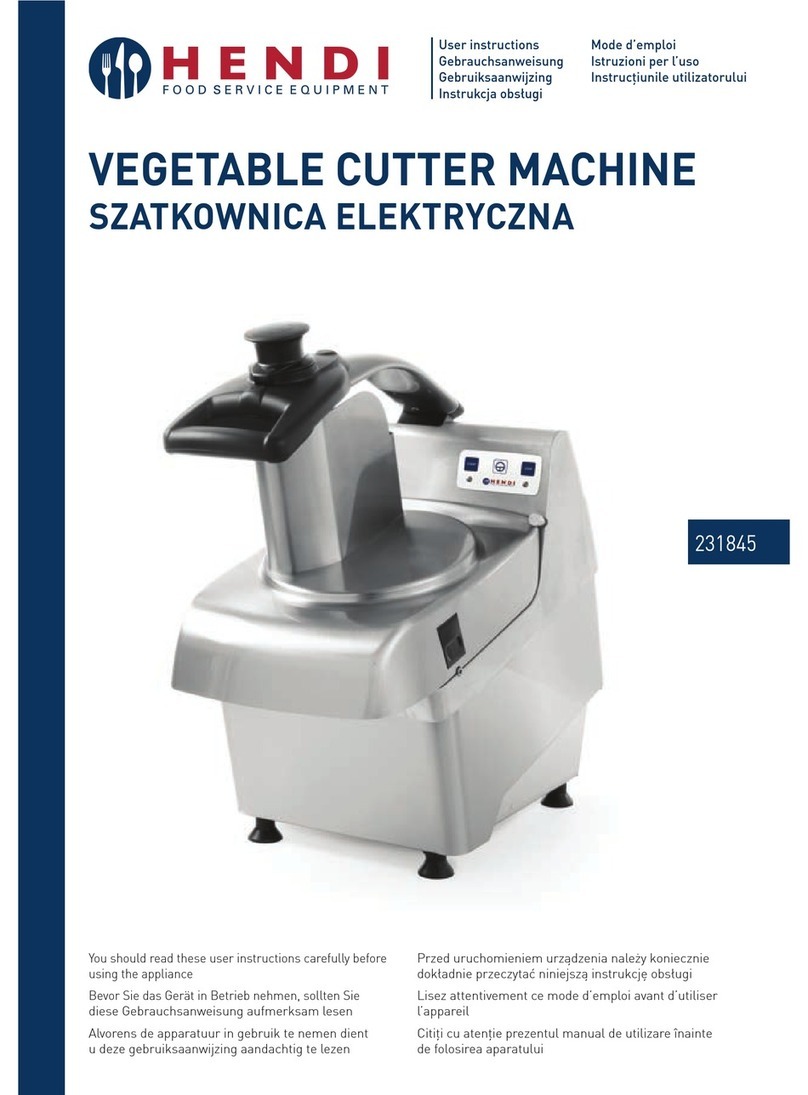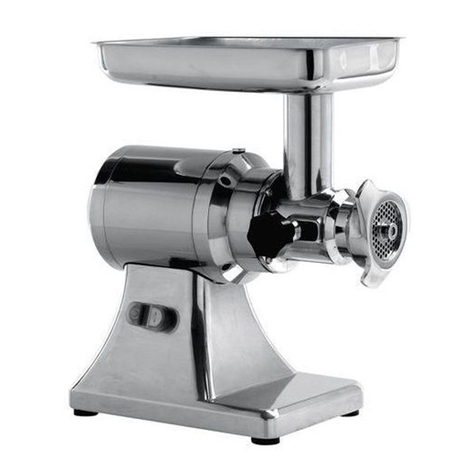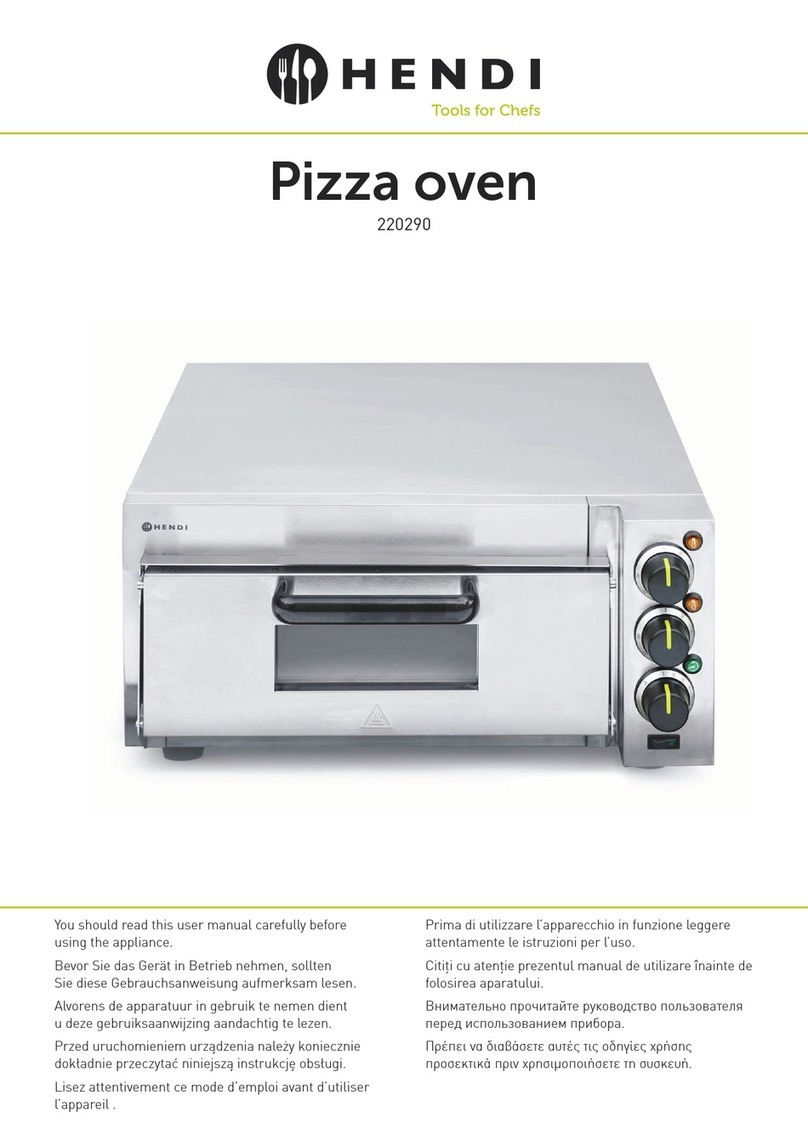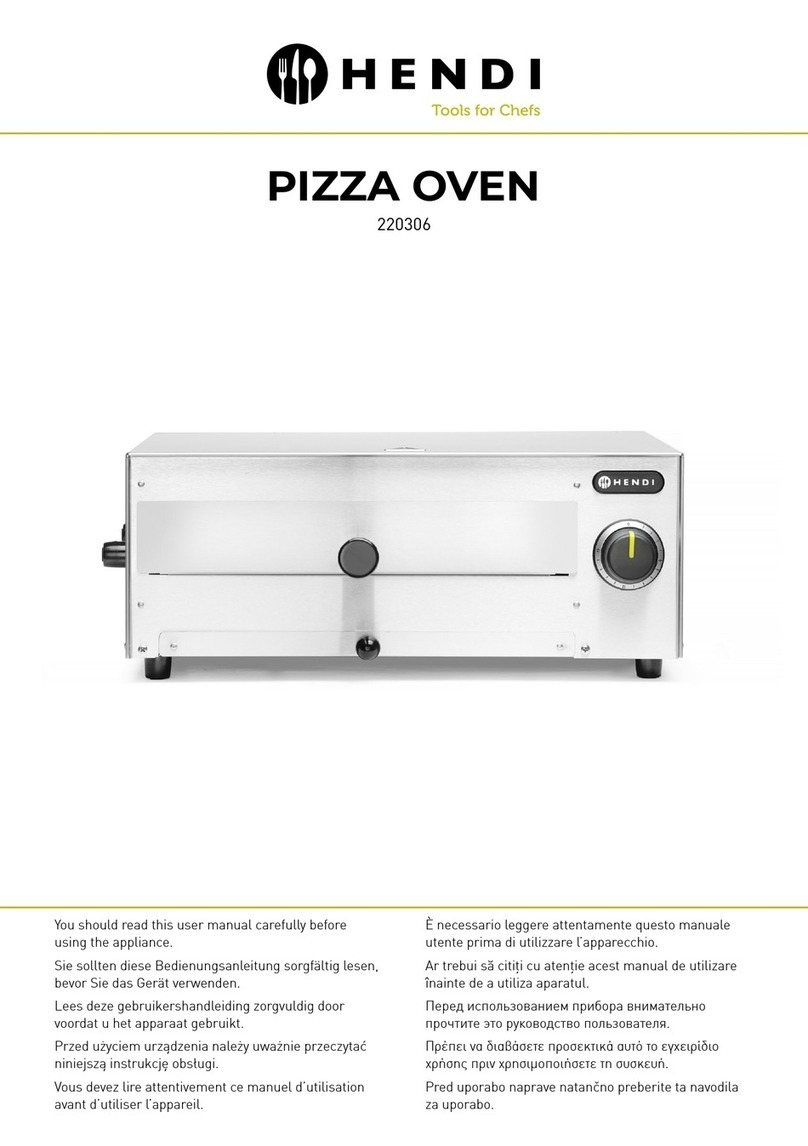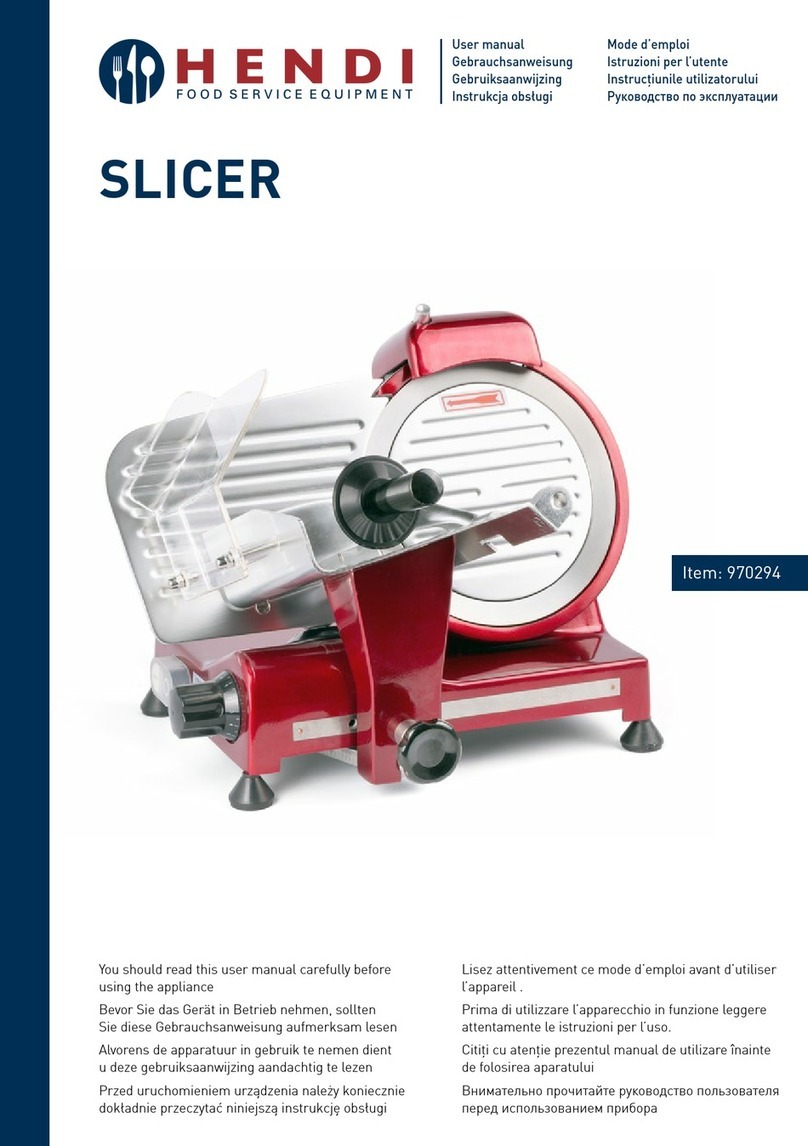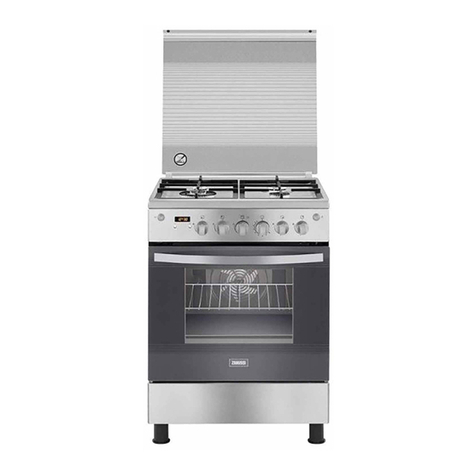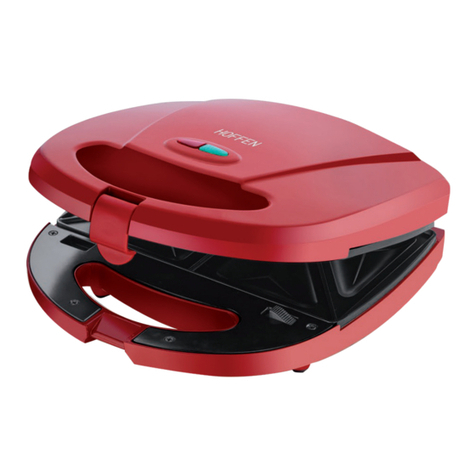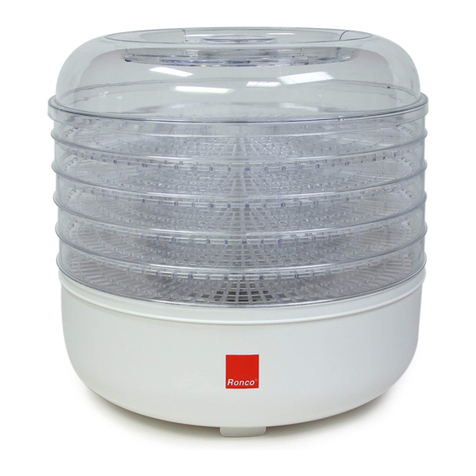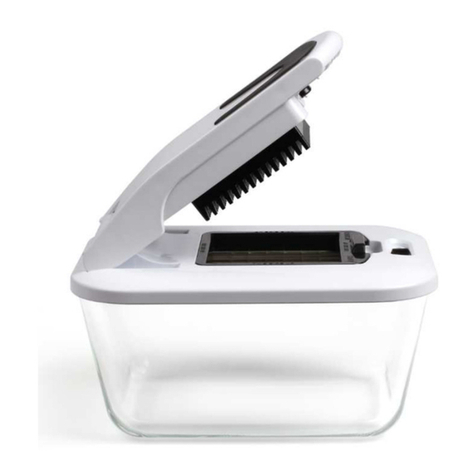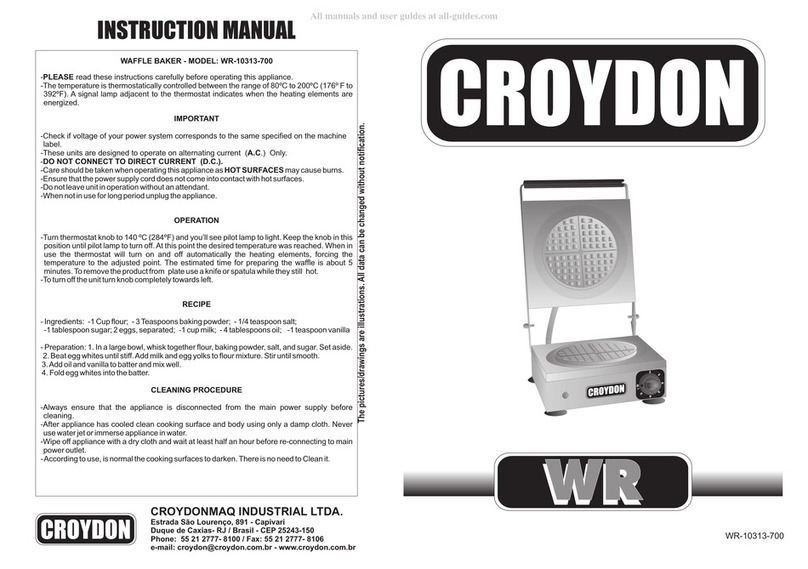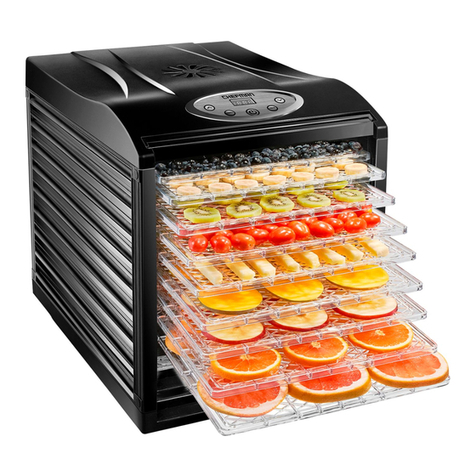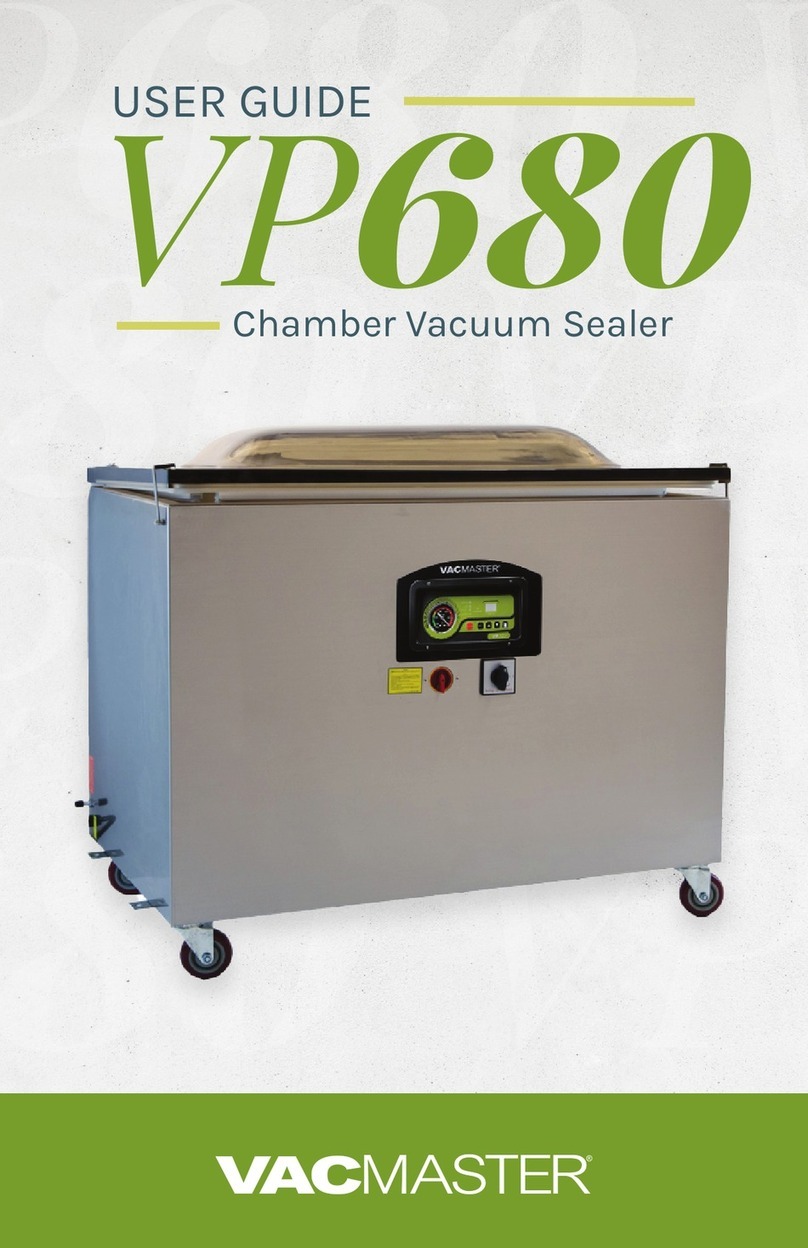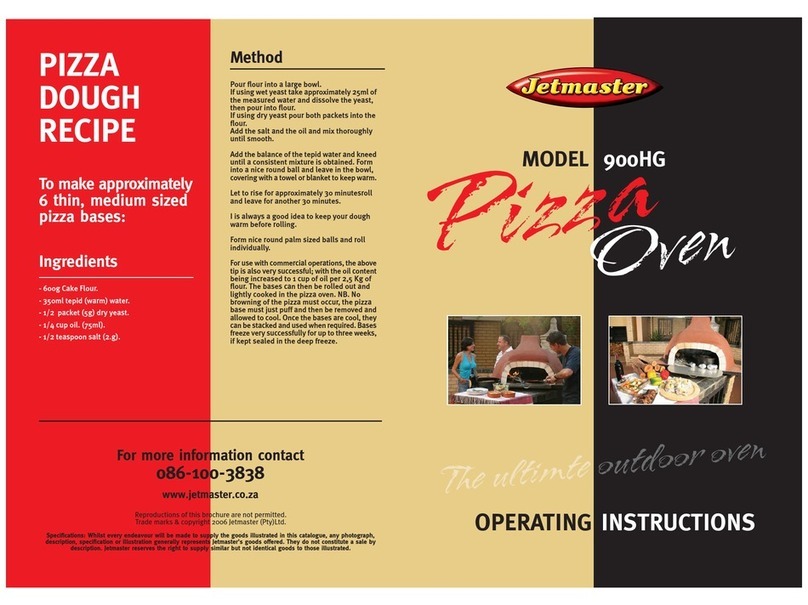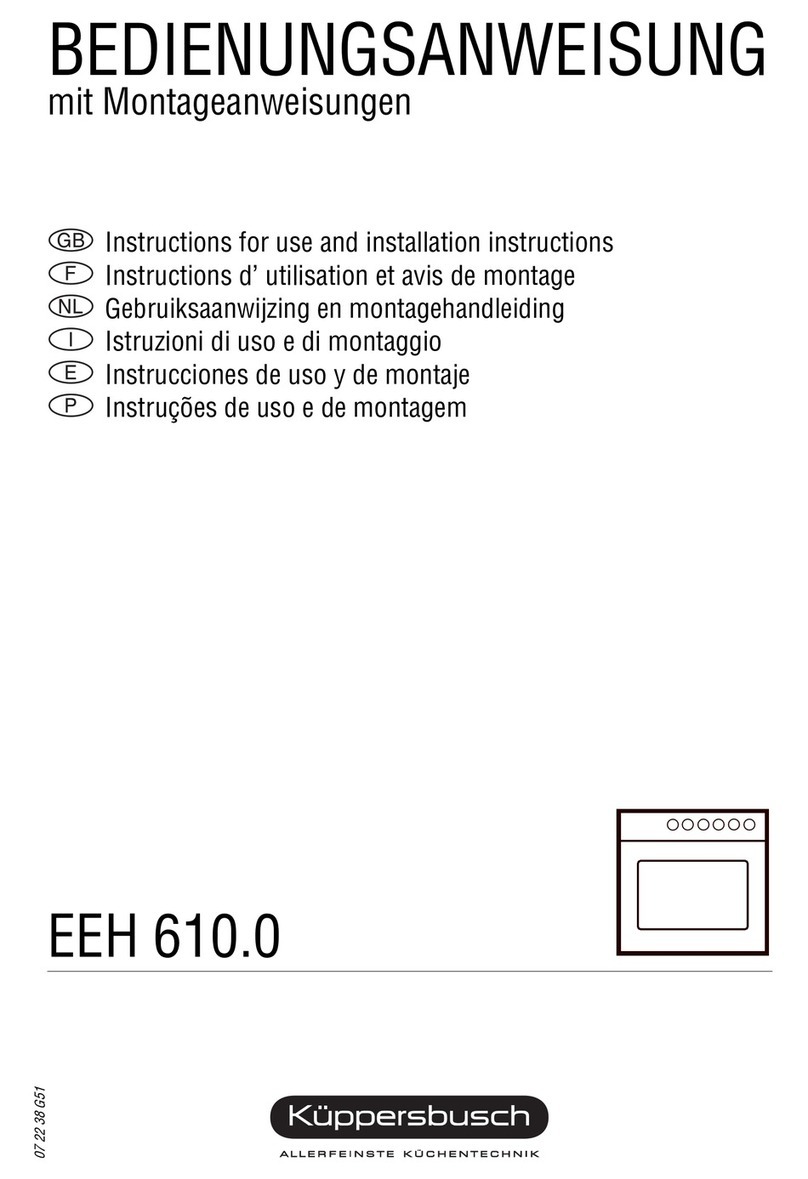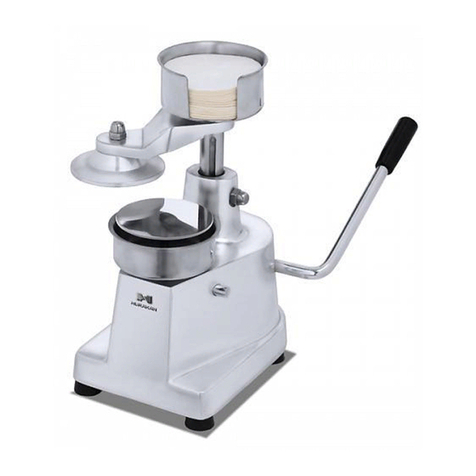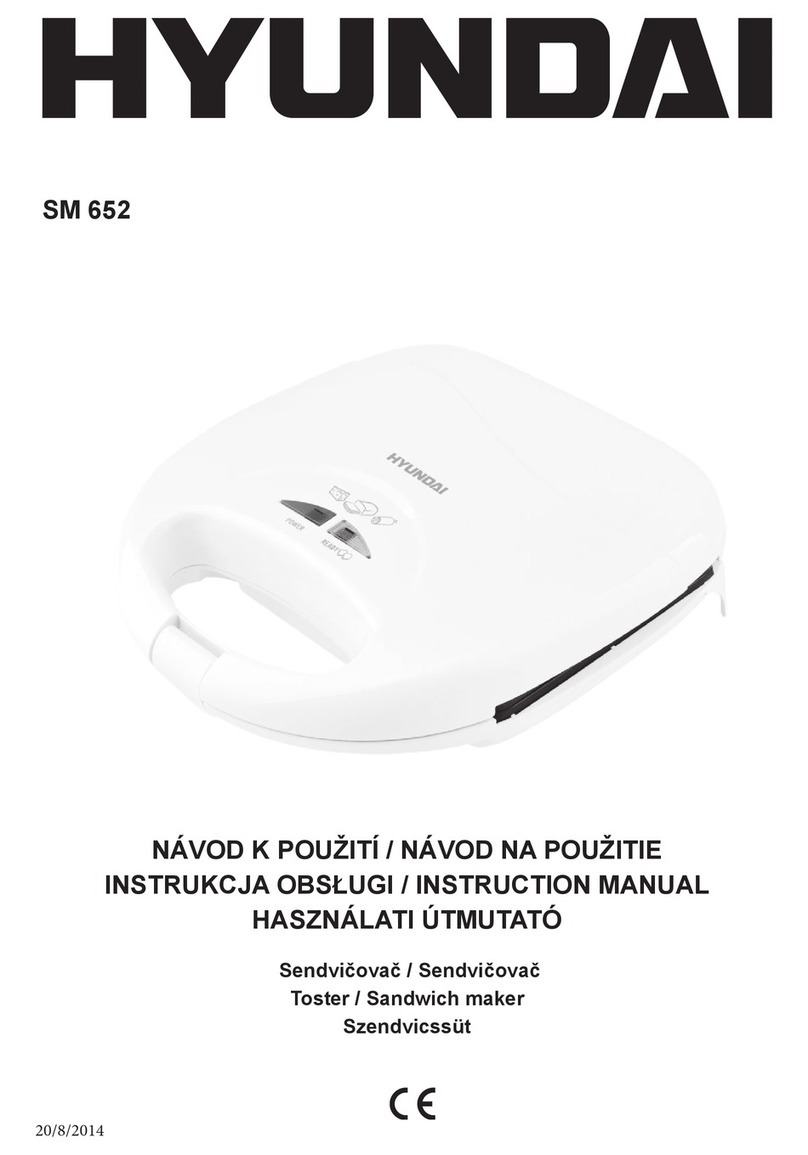
10
EN
8. Open the lid, take out the bag and check the seal.
(Note: A positive seal will look “clear” upon
inspection. If the seal is spotty, incomplete,
wrinkle, white or milky, please cut the seal and
restart the sealing process.)
9. Please store the vacuum items properly after
seal. All perishable foods must be refrigerated
or frozen to prevent spoilage.
Model: 975350
• Choose suitable vacuum bag, place item in bag.
• Allow at least 4.5cm space after item is put in
bag, to ensure better vacuum.
• Put the open end of bag across the chamber seal
gasket. Please make sure that the open end is
within the vacuum chamber.
• Close the lid.
• While pressing lid down with thumbs, press in
latches on both sides of machine base with index
fingers and lock.
• Choose the right seal time option.
- “Normal” – Suitable for working in warm or hot
air temperature; or vacuum dry items (without
liquid).
- “Extended” – Suitable for working in cool or
cold air temperature; or vacuum wet items
(with liquid).
• Press “Vacuum & Seal” button. Indicator light will
turn red.
• Vacuum pump will engage and suction will pull
lid and seal bar down causing lid to unlock (pop-
ping sound indicates latches unlocking).
• Vacuum level sensor knows when it achieves
proper vacuum level and will automatically go
into seal mode.
• When in seal mode, indicator light will change or-
ange, The machine starts to seal; vacuum pump
stops working; no noise; indicator light turns to
orange.
• When sealing is complete. Lid will raise slightly
and green light will illuminate.
• Remove bag and inspect bag and seal. (Note: A
positive seal will look clear upon inspection. If
the seal is spotty, incomplete, wrinkled, white
or milky, remove sealed portion and run vacu-
um and seal process again.)
• Store bag properly. All perishable foods will need
to be refrigerated or frozen to prevent spoilage.
• Press“Cancel” button to stop the machine’s all
working processes. If instant seal is needed, sim-
ply press “Seal” button.
How to use the PULSE vacuum function (item 201626 only)
Since the pressure under the “Pulse” vacuum
function is set to be high, sometimes it is easy to
destroy some delicate items by high pressure in the
vacuum bag. In this case, you can use the “Pulse”
vacuum function to control the vacuum time and
pressure, and prevent crushing delicate items.
When packing some juicy foods, you can also use
this function and prevent liquid being sucked out.
1. Put the items in bag and then put the open end of
the bag across the chamber seal gasket, please
make sure that the open end of the bag within
the chamber room.
2. Close the lid press the lid by hand, and mean-
while press the locks at both ends of the ma-
chine by fingers to lock the lid.
3. Press the “Pulse” button continually, till it reach-
es the pressure that you want. You can watch the
vacuum bag to decide the pressure. During this
process, you can stop vacuum by stop pressing
this button; and press it again to vacuum again.
4. When the pressure reaches what it needs, press
“Seal” button to start sealing.



